A warm bowl of chicken noodle soup is comfort in every spoonful. But if you’re avoiding gluten, traditional noodles are off the table. This gluten-free chicken noodle soup brings back that classic flavor without compromise. It’s hearty, nourishing, and easy to make at home. With tender chicken, fresh vegetables, and perfectly cooked gluten-free noodles, this recipe is both satisfying and wholesome. Keep reading to learn how to make it step by step, plus tips to get the best flavor every time.

Introduction to Gluten Free Chicken Noodle Soup Recipe
Gluten-free chicken noodle soup is the ultimate comfort food made safe and enjoyable for everyone. Whether you’re gluten-intolerant, have celiac disease, or simply want a lighter version of the classic, this soup delivers the same warmth and flavor without the gluten.
Here’s why this recipe stands out:
- Classic comfort, gluten-free twist: You still get the cozy taste of traditional chicken noodle soup, just with noodles that are safe for gluten-free diets.
- Simple ingredients: No complicated steps or fancy tools. Just chicken, broth, veggies, and your choice of gluten-free noodles.
- Nutritious and filling: Packed with protein, vitamins, and minerals, it’s a meal that comforts and nourishes at the same time.
- Family-friendly: Kids love it, adults crave it, and it’s perfect for weeknight dinners or when someone needs a healing bowl of soup.
- Versatile and adaptable: Works with different noodle types, can be made in a slow cooker, and stores well for meal prep.
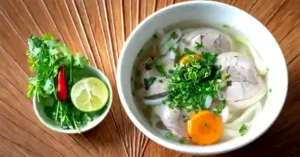
Essential Equipment
Making gluten-free chicken noodle soup doesn’t require fancy tools, but having the right equipment makes the process smoother and stress-free. Here’s what you’ll need before you start cooking:
- Large Soup Pot or Dutch Oven: A heavy-bottomed pot is best for even cooking and holding all the broth, chicken, and vegetables.
- Sharp Chef’s Knife & Cutting Board: Essential for chopping chicken, onions, carrots, celery, and other vegetables.
- Wooden Spoon or Ladle: For stirring the soup and serving it without damaging the noodles.
- Measuring Cups & Spoons: To get the right balance of broth, seasoning, and other ingredients.
- Fine Mesh Strainer (Optional): Helpful if you want to skim foam from the broth or strain noodles separately.
- Tongs: Makes it easy to remove cooked chicken from the pot before shredding.
- Mixing Bowl: Useful for holding shredded chicken or cooked noodles while you finish the soup.
Optional Equipment
- Slow Cooker or Crockpot: If you prefer a hands-off method, this will let the soup simmer to perfection.
- Storage Containers: Airtight containers or freezer-safe jars for storing leftovers.
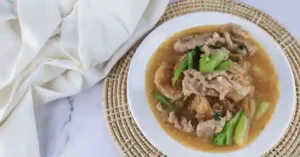
Ingredients Breakdown
A great gluten-free chicken noodle soup starts with simple, wholesome ingredients. Each one plays a role in building flavor and comfort in every spoonful.
For the Soup
- Chicken: Boneless, skinless chicken breasts or thighs work best. Thighs give richer flavor, while breasts keep the soup lean.
- Broth: Use low-sodium chicken broth or homemade stock for full control of flavor and saltiness.
- Onion: A yellow or white onion adds depth and sweetness.
- Carrots: Fresh carrots bring natural sweetness and color.
- Celery: Balances the flavor and adds crunch to the base.
- Garlic: Fresh garlic cloves for a warm, savory touch.
- Olive Oil or Butter: For sautéing vegetables and boosting richness.
- Bay Leaf & Fresh Herbs: A bay leaf, parsley, and thyme add aroma and freshness.
- Salt & Pepper: Essential for seasoning and enhancing flavor.
For the Noodles
Choosing the right gluten-free noodles is key. They should hold up in hot broth without turning mushy. Options include:
- Gluten-Free Egg Noodles: A close match to traditional chicken noodle soup.
- Brown Rice Pasta: Mild flavor and good texture.
- Quinoa or Corn Pasta: Adds a slightly nutty taste.
- Gluten-Free Spaetzle (Optional): A fun variation if you want a German-inspired twist.
Ingredient Tips
Use pre-cooked rotisserie chicken if you want to save time. Add extra vegetables like peas, spinach, or zucchini for more nutrition. For a richer broth, simmer chicken with bones and remove them later.
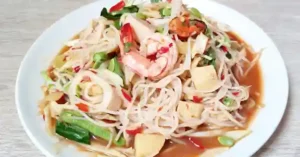
Step-by-Step Instructions
Making gluten-free chicken noodle soup is simple when broken down into a few easy steps. Follow this process for the perfect bowl every time:
Prepare the Chicken and Vegetables
Rinse and pat dry your chicken breasts or thighs. Dice the onion, slice the carrots, and chop the celery. Mince the garlic cloves. Keep vegetables similar in size so they cook evenly.
Sauté the Aromatics
Heat 1–2 tablespoons of olive oil or butter in a large soup pot or Dutch oven over medium heat. Add the onion, carrots, and celery. Cook for about 5 minutes, stirring occasionally, until softened. Add garlic and cook for another minute until fragrant.
Build the Broth
Place the chicken directly into the pot with the vegetables. Pour in the chicken broth until the chicken is fully covered. Add a bay leaf, parsley, thyme, salt, and black pepper. Bring to a gentle boil, then reduce to a simmer. Cover and cook for 20–25 minutes, or until the chicken is fully cooked and tender.
Shred the Chicken
Remove the chicken from the pot and place it on a cutting board. Use two forks to shred the chicken into bite-sized pieces. Return the shredded chicken back into the simmering broth.
Cook the Noodles
In a separate pot, cook your chosen gluten-free noodles according to package directions. Drain and rinse under cold water to prevent sticking. Keep noodles aside until serving (this prevents them from getting mushy in the broth).
Assemble the Soup
Add the cooked noodles to the pot just before serving. Taste the broth and adjust seasoning with more salt, pepper, or herbs if needed. Let the soup simmer gently for another 3–5 minutes to bring flavors together.
Serve and Enjoy
Ladle the soup into bowls while hot. Garnish with fresh parsley or a squeeze of lemon for brightness. Serve with gluten-free bread, crackers, or a side salad for a complete meal.
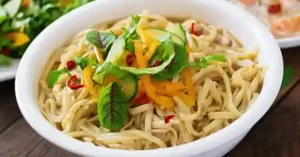
Slow Cooker & Make-Ahead Options
One of the best things about gluten-free chicken noodle soup is how adaptable it can be. Whether you want the convenience of a slow cooker or prefer to prep ahead for busy days, this recipe works beautifully.
Slow Cooker Method
If you love the “set it and forget it” style of cooking, the slow cooker is your best friend.
- Add the Base Ingredients: Place chicken, carrots, celery, onion, garlic, broth, and seasonings directly into the slow cooker.
- Set the Timer: Cook on low for 6–7 hours or on high for 3–4 hours. The chicken will become tender and flavorful.
- Shred the Chicken: About 30 minutes before serving, remove the chicken, shred it, and return it to the pot.
- Cook the Noodles Separately: As with the stovetop version, boil gluten-free noodles in a separate pot. Stir them into the soup just before serving.
This method is perfect for busy weekdays or when you want dinner ready without standing over the stove.
Make-Ahead and Meal Prep Tips
- Prep Ingredients in Advance: Chop vegetables and store them in airtight containers in the fridge for up to 2 days before cooking.
- Cook the Chicken Early: You can poach or bake chicken ahead of time, shred it, and store it in the fridge. Add it to the soup when you’re ready to cook.
- Store the Soup and Noodles Separately: This is key for keeping the noodles firm. Refrigerate the broth and veggies in one container and the noodles in another. Combine when reheating.
- Freezer-Friendly Option: The soup base (without noodles) can be frozen in freezer-safe containers for up to 3 months. When reheating, add freshly cooked noodles for the best texture.
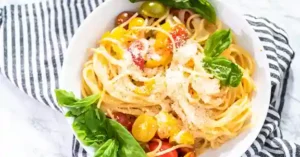
Tips for the Best Gluten-Free Chicken Noodle Soup
Gluten-free chicken noodle soup is simple, but a few tricks can take it from good to outstanding. These tips ensure rich flavor, perfect noodles, and a soup that everyone will love.
Choose the Right Noodles
Not all gluten-free noodles are created equal. Some turn mushy quickly in hot broth. Rice, quinoa, or gluten-free egg noodles usually hold their shape best. Always cook them separately and add them to the soup just before serving.
Don’t Skip the Sauté
Sautéing onions, carrots, celery, and garlic before adding broth creates a rich flavor base. This extra step adds depth and makes your soup taste homemade instead of bland.
Use Quality Broth
Since broth is the heart of the soup, use a good one. Homemade chicken stock gives the best flavor, but a low-sodium store-bought broth works well too. If you want extra richness, simmer bones or add a splash of bone broth.
Season in Layers
Add salt and pepper gradually while cooking, not just at the end. Seasoning the chicken and vegetables early helps every ingredient absorb flavor.
Shred, Don’t Dice, the Chicken
Shredded chicken gives the soup a tender, rustic feel. Diced chicken can feel chewy, while shredded pieces soak up broth and blend seamlessly with noodles and vegetables.
Keep Noodles Separate Until Serving
Gluten-free noodles break down faster than wheat pasta. To avoid soggy noodles, store them separately and stir them into individual bowls of soup just before eating.
Brighten with Fresh Herbs or Citrus
Fresh parsley, thyme, or dill add a finishing touch. A small squeeze of lemon juice at the end balances the richness of the broth and brings the soup to life.
Add Extra Veggies for Nutrition
Peas, spinach, or zucchini can easily be stirred in for added flavor, color, and vitamins without changing the classic taste.
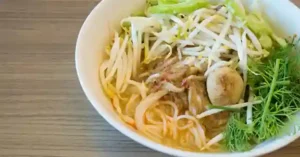
Serving Suggestions
Gluten-free chicken noodle soup is satisfying on its own, but pairing it with the right sides can turn a simple bowl into a complete meal. Here are some easy and delicious serving ideas:
Gluten-Free Bread or Rolls
A slice of warm, crusty gluten-free bread is perfect for dipping into the flavorful broth. You can also serve it with garlic butter rolls or gluten-free biscuits for extra comfort.
Fresh Salad
Balance the warm, hearty soup with a crisp side salad. A simple garden salad with lettuce, cucumber, and tomatoes works well, or try a tangy coleslaw for crunch.
Roasted Vegetables
Pair your soup with roasted carrots, zucchini, or Brussels sprouts for extra nutrition and texture.
Crackers or Breadsticks
Gluten-free crackers or breadsticks make a light and crunchy side that’s easy to serve with soup.
Light Protein Sides
If you’re serving a crowd or want a more filling dinner, pair the soup with grilled chicken skewers, baked fish, or a cheese platter with gluten-free options.
Comfort Add-Ons
For cozy evenings, serve the soup with mashed potatoes or a small gluten-free grilled cheese sandwich for a heartier meal.

Storage & Reheating Instructions
Gluten-free chicken noodle soup keeps well, but handling it properly ensures the noodles don’t turn mushy and the flavor stays fresh.
Refrigeration
Store the broth and noodles separately. Keep the soup (broth, chicken, and vegetables) in one container and the cooked noodles in another. Use airtight containers. This prevents the soup from absorbing other fridge odors.
- Shelf life: The soup base lasts up to 4 days in the refrigerator. Noodles stay fresh for about 2–3 days.
Freezing
- Freeze only the soup base: Gluten-free noodles don’t hold up well in the freezer, so leave them out.
- Portion before freezing: Divide into individual or family-size freezer-safe containers for easy reheating.
- Freezer life: The soup base can be frozen for up to 3 months.
Reheating
- Stovetop method: Pour the soup base into a pot, bring to a gentle simmer, and heat until warmed through.
- Microwave method: Reheat in a microwave-safe bowl in 1–2 minute intervals, stirring in between.
- Add noodles last: Warm the noodles separately with a splash of broth or water, then stir them into the soup just before serving to avoid mushiness.
Extra Tip
If you’re planning to store leftovers, cook only the amount of noodles you’ll need for that meal and prepare a fresh batch when reheating the soup later. This keeps the texture firm and satisfying.

Nutrition & Health Benefits
Gluten-free chicken noodle soup isn’t just comforting — it’s also nourishing and well-balanced. Every bowl gives you a mix of protein, carbs, vitamins, and minerals that support overall health.
Nutritional Highlights (per serving, approximate)
- Calories: 250–350 (varies by noodle type)
- Protein: 20–25g (from chicken)
- Carbohydrates: 25–35g (from gluten-free noodles and vegetables)
- Fat: 8–12g (from chicken and olive oil/butter)
- Fiber: 3–5g (from vegetables and gluten-free pasta)
Why It’s Good for You
- Protein-Packed: Chicken provides lean protein that supports muscle repair and keeps you feeling full.
- Immunity Boosting: Garlic, onion, and herbs offer natural antioxidants that help fight off colds and support the immune system.
- Gluten-Free & Digestive-Friendly: Using gluten-free noodles makes this soup safe for those with celiac disease or gluten sensitivities.
- Light Yet Satisfying: With broth as the base, the soup is hearty without being heavy, making it perfect for lunch, dinner, or when you’re under the weather.
- Customizable for Nutrition: Add extra veggies for more vitamins, or use bone broth for added minerals and collagen.
Conclusion
Gluten-free chicken noodle soup proves that comfort food doesn’t have to mean compromise. With tender chicken, fresh vegetables, and perfectly cooked gluten-free noodles, this recipe delivers warmth and nourishment in every spoonful. It’s easy to make, adaptable for busy schedules, and healthy enough for everyday meals. Whether you’re cooking for your family, meal prepping, or simply craving a cozy bowl on a chilly day, this soup will quickly become a staple in your kitchen. Give it a try, and you’ll see how satisfying gluten-free cooking can be.
FAQS
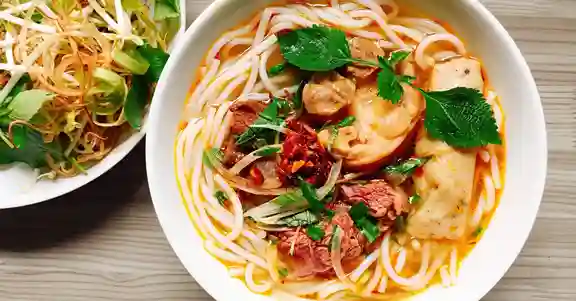
Gluten Free Chicken Noodle Soup Recipe
Ingredients
Method
- Heat olive oil and butter in a large soup pot or Dutch Oven over medium heat. Add carrots, celery, and shallot, season with salt and pepper, then saute until tender, 10 minutes. Add garlic then saute for 1 more minute. Add chicken broth then bring to a boil.
- Season chicken with salt and pepper then add to boiling chicken broth along with the pasta. Turn heat down to medium then simmer, stirring occasionally, until pasta is cooked through. Taste then adjust salt and pepper if necessary and then serve.
